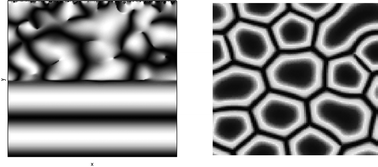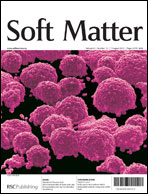Liquid crystal models of biological materials and processes
Abstract
This paper presents an overview of liquid crystal (LC) models of phase diagrams, phase transitions, self-assembly, interfaces, defects, and rheology and their integrated applications to biological mesophase materials and processes. Biological liquid crystals, classified into analogues (helicoidal plywoods), biopolymer solutions (in vitro DNA, polypeptides, collagen solutions) and in vivo LCs (membranes, silk, DNA), are discussed in terms of molecular characteristics and the symmetry of the thermodynamic phases. The thermodynamics and self-assembly of biological liquid crystals (BLCs) are discussed in terms of the Doi–Maier–Saupe lyotropic model and its extensions to chiral phases, showing the role of excluded volume and chirality. The defect physics of BLCs is described using the Landau–de Gennes model of chiral and achiral nematostatics to identify (i) thermodynamic phases, and (ii) observed textures and defect lattices under confinement and flow. The rheology and flow properties of BLCs are described using the Leslie–Ericksen and the Landau–de Gennes models of nematodynamics. The applications of integrated thermodynamic/defect/rheology modeling to the experimental characterization of several BLCs, including collagen and DNA solutions, are shown to provide organizing principles and quantitative tools to establish the properties of these natural materials. The phase transitions, tactoidal spherulites, flow-birefringence in dilute solutions, and banded textures in sheared concentrated solutions of collagen show how the principles of LC physics operate in BLC materials. Drying and spreading drops of DNA solutions leading to the formation of nematic monodomain aligned along the contact line are shown to follow self-assembly structuring under the action of interfacial, bulk, and contact line torques. Finally modeling of spider and silkworm LC spinning is presented as an example of biological polymer processing, where a high performance fiber material is produced through a lyotropic LC protein solution. The concerted structuring action of capillary confinement, strong anchoring, and nematic flow leads to predictions in agreement with the reported textural transitions in the duct of spiders and silkworms. The quantitative description of BLC materials and processes using mesoscopic models provides another tool to develop the science and future biomimetic applications of these ubiquitous natural anisotropic soft materials.


 Please wait while we load your content...
Please wait while we load your content...